There’s nothing quite like the taste of a perfectly spiced dish. A perfect blend of spices is what any aspiring cook aims for in their food. One of these spices I like to dabble with in my cooking is the highly popular cayenne peppers. It adds a delicious kick to dishes and can be used in everything from soups and stews to delicious homemade sauces and rubs.
But more often than not, I run out of cayenne pepper or need to find a substitute for someone who can’t handle the heat. That’s why I decided to do some digging and line up the best substitutes for cayenne out there. So, join me as I show you several deliciously spicy cayenne pepper substitutes.
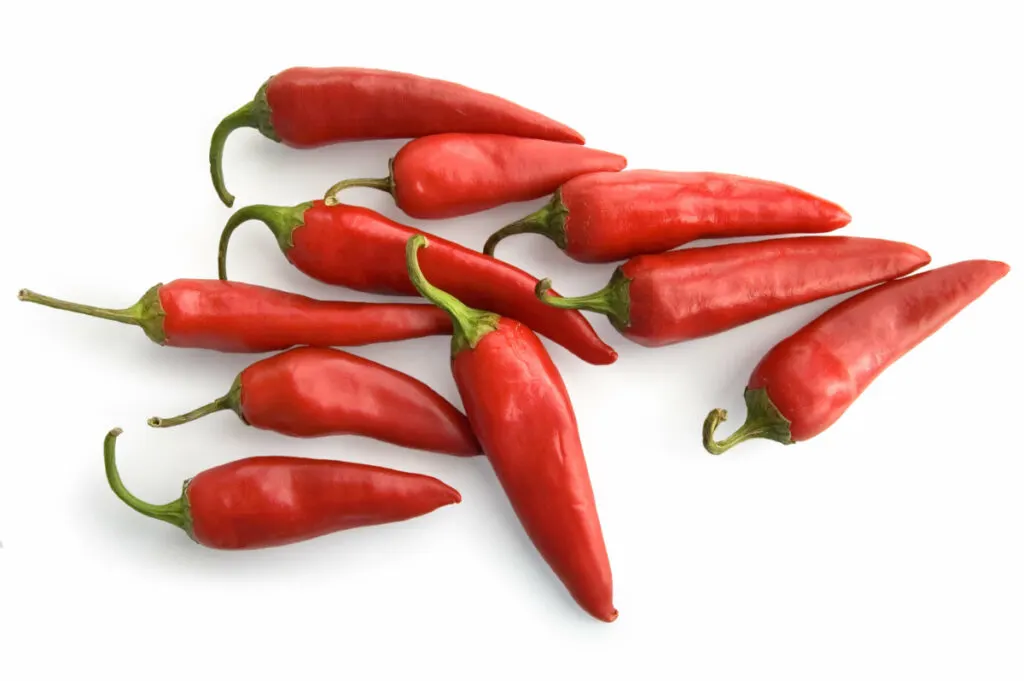
What is Cayenne Pepper?
Cayenne pepper is a type of chili pepper that’s commonly used in cooking to add heat and flavor to dishes. It’s made from dried and ground red chili peppers, specifically from the Capsicum annuum plant. The heat level of cayenne pepper varies depending on the specific variety of chili pepper used, but it’s generally considered to be a moderate to hot spice.
This pepper is also commonly used to make hot sauce, which is a condiment made from a mixture of chili peppers, vinegar, and other ingredients. Cayenne pepper sauce is a popular addition to many types of cuisine, including Mexican, Caribbean, and Cajun.
Health Benefits of Cayenne Pepper
Cayenne peppers offer tons of health benefits. One of its notable traits is its ability to boost metabolism. This is attributed to capsaicin, a compound in cayenne pepper that elevates body heat production, aiding in burning more calories and facilitating weight loss. Capsaicin has even been shown to diminish appetite while promoting feelings of fullness, reducing overall calorie consumption.
The pepper serves as a natural detoxifier, enhancing circulation and perspiration to expel toxins. Incorporating cayenne pepper into detox beverages, such as lemon water, not only purifies the system but also fortifies the immune system.
Beyond metabolism and detoxification, cayenne pepper possesses anti-inflammatory and pain-relieving properties due to capsaicin. It has been found beneficial in alleviating discomfort from conditions like arthritis, headaches, and nerve damage.
Best Cayenne Substitute
Hot Paprika
1 teaspoon of cayenne = 2 teaspoon of hot paprika
Hot paprika is a mild yet flavorful substitute for cayenne pepper in many of the same dishes. With a Scoville scale rating of around 1,000 to 15,000, it’s considerably lower than cayenne pepper’s rating of 30,000 to 50,000. Although the peppers used to make hot paprika are also usually smoked, giving it a rich, smoky flavor that can enhance a variety of recipes.
The use of smoked peppers means it can add a distinctively smoky flavor to your chili, soups, stews, and marinade dishes. You can also use hot paprika as a seasoning for meats, vegetables, and eggs, which will give your dishes a flavorful and spicy twist.
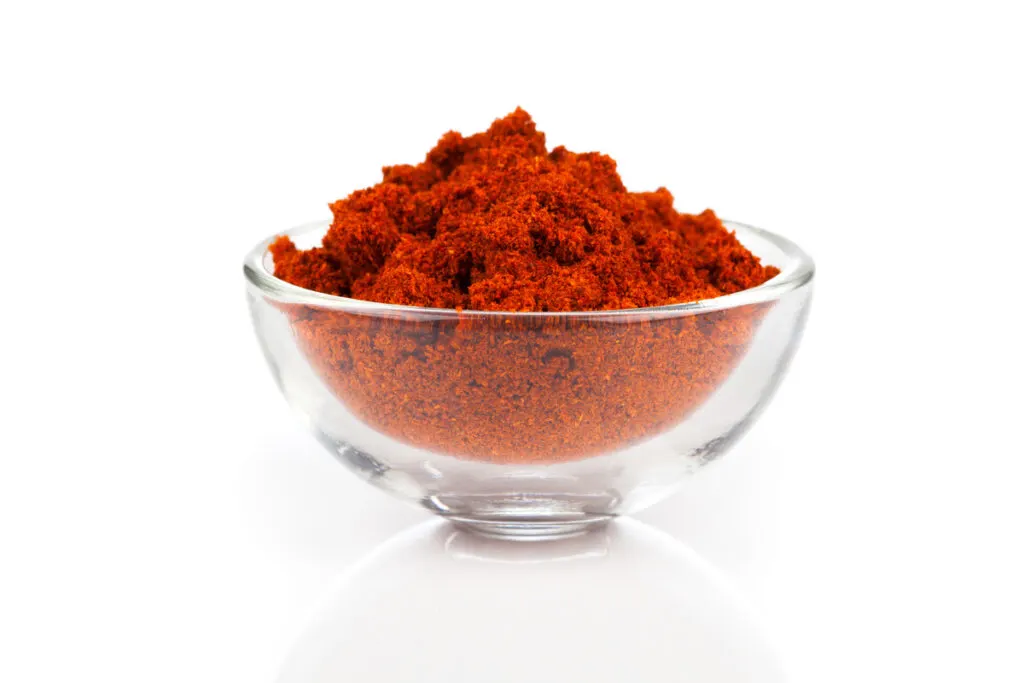
Gochugaru
1 teaspoon of cayenne = 1 teaspoon of gochugaru
Gochugaru is a Korean chili pepper that’s made from sun-dried red chili peppers that are ground into flakes and have a medium level of heat ranging from 4,000 to 8,000 on the Scoville scale. Its flavor profile is slightly smoky, sweet, and fruity, which may possibly affect how much can be used, regardless of spice level, so keep this in mind when using it.
It’s used in dishes like kimchi, bulgogi, and tteokbokki but can also be added to stir-fries, marinades, and sauces. Gochugaru can even be used to season roasted vegetables, popcorn, and dips, imparting a distinct and mildly spicy taste.
Chili Powder
1 teaspoon of cayenne = 2 teaspoons of chili powder
Chili powder is another popular spice blend made from ground-dried chili peppers, cumin, oregano, and garlic, among other ingredients. Although it’s not similar to cayenne pepper in terms of its level of heat and spiciness, chili powder can still be a great substitute for cayenne pepper.
The degree of heat in chili powder may vary, but it generally falls between 1,000 to 5,000 on the Scoville scale, making it very milder in comparison to cayenne pepper.
Even though it lacks in spiciness, it’s still a great addition to Mexican and Tex-Mex dishes, such as tacos, enchiladas, and burritos, providing a mild to medium level of heat and a complex and savory flavor. Chili powder can also be used as a seasoning for grilled meats, adding a smoky and slightly spicy touch to dishes like chicken, steak, and pork.
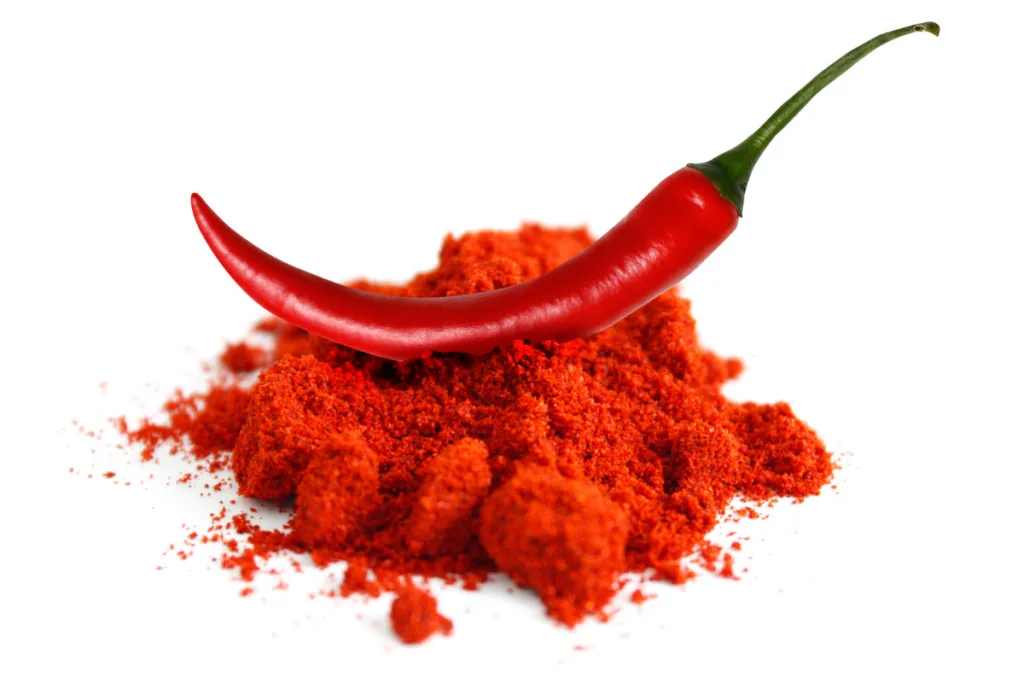
Red Pepper Flakes / Red Chili Flakes
1 teaspoon of cayenne = 1 teaspoon of red pepper flakes / red chili flakes
Red pepper flakes, or red chili flakes, are a highly flexible alternative to cayenne pepper that’s produced by drying and crushing red chili peppers, creating a comparable level of heat to cayenne pepper that ranges from 30,000 to 50,000 on the Scoville scale. These flakes also have a slightly smoky and earthy taste, which can bring richness and subtle flavor to your dishes.
They work well in various cuisines, such as Italian, Mexican, and Asian, to bring a mildly spicy and flavorful touch. You can even use red pepper flakes to season pasta dishes like spaghetti with garlic and olive oil or as a topping for pizza, such as pepperoni and sausage. Red pepper flakes can even be added to stir-fries, curries, and soups to enhance their taste and heat.
Tabasco Peppers
1 teaspoon of cayenne = 1 teaspoon of tabasco peppers
Tabasco peppers are an excellent replacement for cayenne pepper as they have a very comparable spice level. They are a type of chili pepper that’s frequently used to create tabasco sauce and have a level of heat ranging from 30,000 to 50,000 on the Scoville scale.
These peppers also have a slightly fruity and tangy taste, which can add a delicious fresh touch to your dishes.
For those who want to infuse their dishes with a Louisiana-style kick, you can use these peppers to create a homemade hot sauce or add heat and flavor to classic dishes like gumbo, jambalaya, and red beans with rice. It can also be used to season grilled meats, such as chicken and shrimp, providing a slightly tangy and spicy taste.
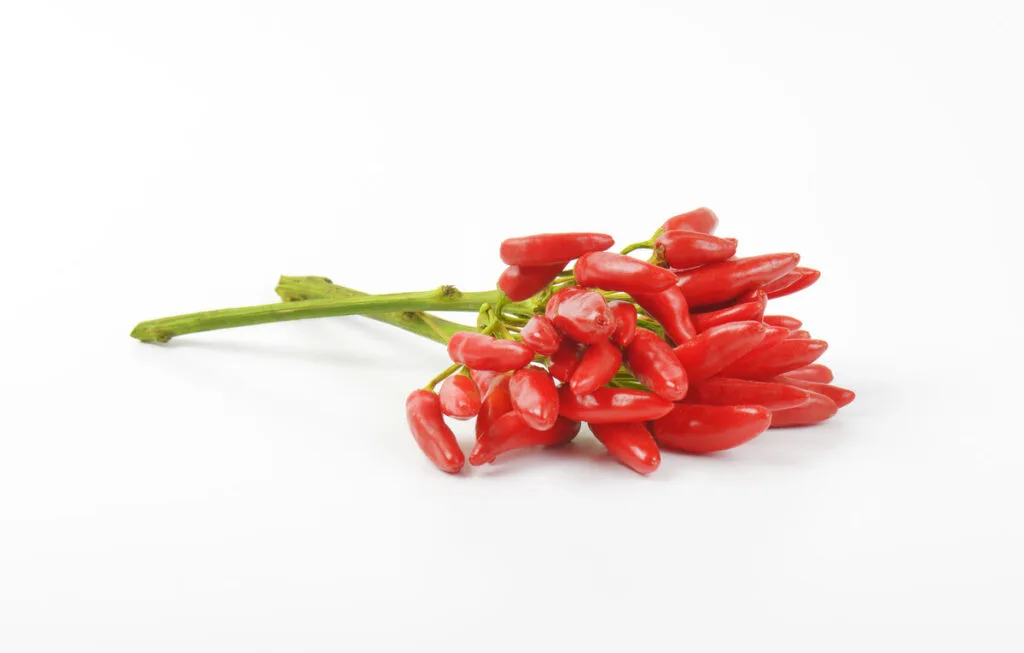
Serrano Peppers
1 teaspoon of cayenne = 2 teaspoon of serrano peppers
Serrano peppers are a popular ingredient in Mexican cuisine that differs somewhat from cayenne peppers in terms of heat level. Serrano peppers have a bright and refreshing taste with a slightly grassy and fruity flavor with a spiciness of 10,000 to 23,000 on the Scoville scale.
They can be used to create homemade salsa and enhance the taste and heat of classic Mexican dishes like tacos, enchiladas, and fajitas. Serrano peppers can even be used to season guacamole, providing a mildly spicy and fruity flavor.
Jalapeno Peppers
1 teaspoon of cayenne = 2 teaspoon of jalapeno peppers
Jalapeno peppers can be a fantastic milder Mexican alternative with a range of 2,500 to 8,000 on the Scoville scale. They also offer a vibrant and refreshing flavor, with a hint of grassy and earthy notes that can give a unique touch to dishes.
They can be used in lots of ways, like making homemade salsa and adding flavor and heat to dishes like nachos, quesadillas, and stuffed peppers. They can also enhance the taste of guacamole by providing a slightly spicy and refreshing flavor.
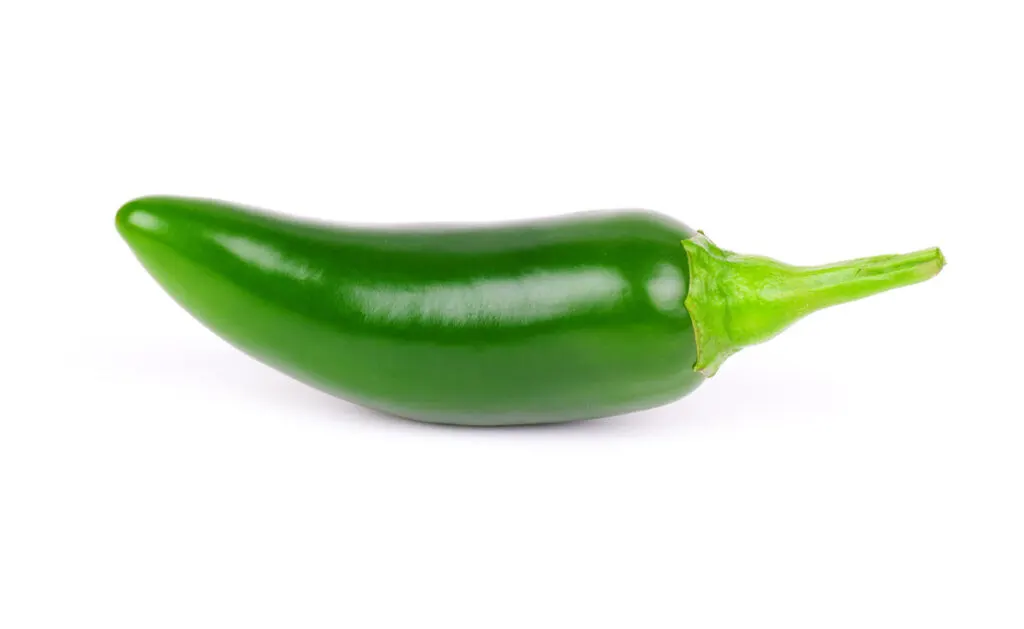
Thai Peppers
1 teaspoon of cayenne = 1/2 teaspoon of Thai peppers
Thai peppers are a staple ingredient in Thai cuisine known for their spicy kick. This spicy kick has a range of 50,000 to 100,000 on the Scoville scale, making them spicier than cayenne peppers. Despite the difference in heat level, Thai peppers are still a great alternative to cayenne pepper as they offer a vibrant and fiery flavor with a hint of fruity and floral notes.
Incorporating Thai peppers is an excellent choice for those who crave Southeast Asian-style spiciness in their dishes. They’re the perfect ingredient for making homemade curry paste and can also add heat and flavor to various dishes such as Pad Thai, Tom Yum soup, and stir-fries. They can also enhance the taste of dipping sauces by providing a slightly spicy and floral flavor.
Tabasco Sauce
1 teaspoon of cayenne = 1 teaspoon of tabasco sauce
Tabasco sauce is a popular condiment that can be used as a substitute for cayenne pepper in many recipes. It’s made from tabasco peppers, vinegar, and salt and has a tangy and spicy flavor that’s milder than its counterpart as it clocks in at 2,500 to 5,000 on the Scoville scale.
Disregarding its lower heat level, it can still be used to add a delicious flavor and subtle heat to grilled meats like chicken and shrimp, as well as to enhance the taste of traditional Louisiana dishes such as gumbo, jambalaya, and red beans with rice.
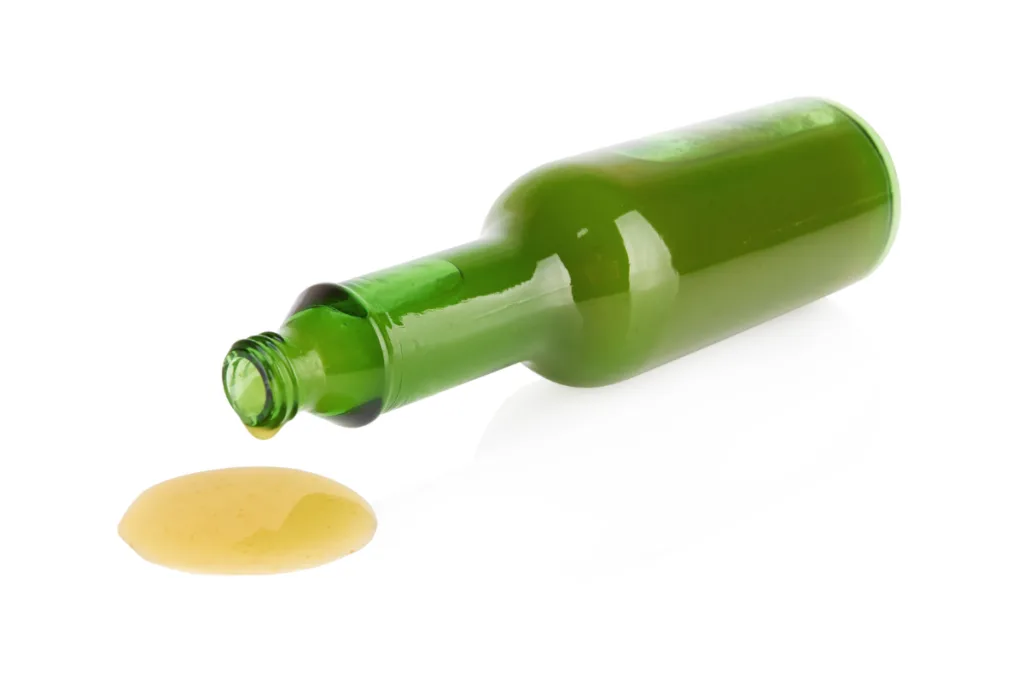
Crystal Hot Sauce / Hot Sauce
1 teaspoon of cayenne = 1/2 teaspoon of crystal hot sauce (Start with half the amount, adjust as needed)
While hot sauce and cayenne pepper differ in their level of spiciness, Crystal hot sauce can make for an excellent in-betweener in many recipes. It’s made from aged cayenne peppers, vinegar, and garlic and has a unique tangy and spicy flavor that can be used in marinades, dressings, and sauces.
This hot sauce also has a moderate heat level, with a Scoville scale rating ranging from 3,000 to 4,000, making it a great way to add a small splash of spice to your dishes.
For those who desire a spicy kick in their drinks, incorporating a regular hot sauce is best, as it can be used to add flavor and heat to cocktails like Bloody Marys and Margaritas, as well as to enhance the taste of non-alcoholic drinks such as lemonade and iced tea.
Paprika
1 teaspoon of cayenne = 2 teaspoon of paprika
Paprika is another highly versatile and popular spice that’s made from dried and ground sweet or hot peppers and has a range of flavors and heat levels, depending on the type of paprika.
It can be used to season meats, such as beef and lamb, and to add flavor and color to rice, quinoa, and vegetable dishes. Paprika can even be used as a seasoning for dips and sauces, such as hummus and tzatziki, adding a slightly smoky and sweet flavor.
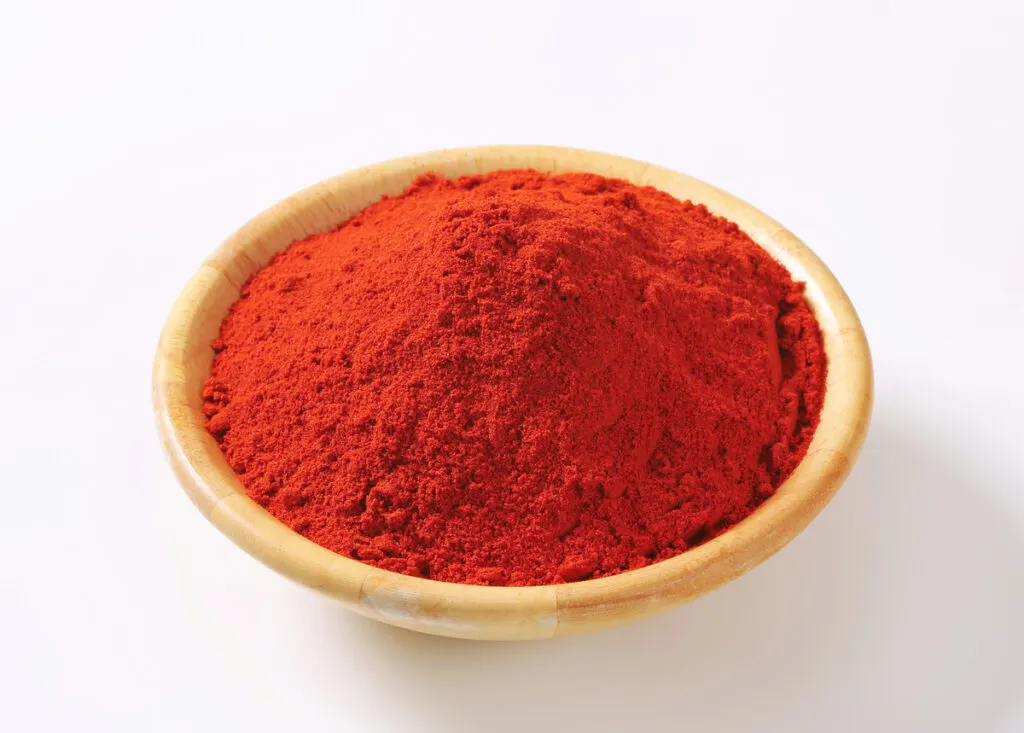
Frank’s Redhot
1 teaspoon of cayenne = 15-16 drops of Frank’s Redhot (adjust as needed)
Frank’s RedHot is a well-liked alternative to cayenne pepper that can provide a very low level of heat to dishes. Despite having a different level of hotness, it’s created from cayenne peppers, vinegar, and garlic but with a lower level of spiciness as it sits at just 450 to 900 on the Scoville scale.
It can be used as a dipping sauce for chicken wings, fries, and vegetables, as well as a quick dash of spice to sandwiches, burgers, and pizzas. Frank’s RedHot can even be used as a marinade or glaze for meats and vegetables, adding a tangy and spicy touch.
Chipotle Powder
1 teaspoon of cayenne = 3 teaspoon of chipotle powder
Chipotle powder is a delicious alternative to cayenne peppers, as it’s made from dried and smoked jalapeno peppers, which have a smoky and savory flavor.
For those who crave this flavor in their dishes, it can be used to season meats such as chicken and fish and improve the taste and appearance of dishes like rice, quinoa, and roasted vegetables. It can even be used as a seasoning for dips and sauces like guacamole and salsa, adding a slightly smoky and savory flavor to them that’s similar to paprika.
FAQs
How hot is cayenne pepper?
Cayenne pepper is known for its spiciness and can range from 30,000 to 50,000 Scoville heat units (SHU). The heat level can vary depending on the variety and growing conditions. It’s considered a medium to hot pepper and can add a significant amount of heat to any dish.
What spice matches the heat of cayenne pepper?
If you are looking for a spice that matches the heat of cayenne pepper, then red pepper flakes are a great substitute. Red pepper flakes are made from dried and crushed red chili peppers and have a similar heat level to cayenne pepper. They are a pantry staple and can be found in most grocery stores.
What should you use instead of cayenne pepper?
Paprika is a great substitute as it has a similar appearance and texture to cayenne pepper but without the heat. Chili powder is another good option and can be used interchangeably with cayenne pepper in most recipes. Other substitutes include hot sauce, fresh hot peppers, and jalapeno pepper powder.
